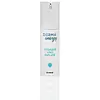What's inside
What's inside
 Key Ingredients
Key Ingredients

 Benefits
Benefits

 Concerns
Concerns

 Ingredients Side-by-side
Ingredients Side-by-side

Water
Skin ConditioningGlycerin
HumectantSodium Hyaluronate
HumectantPhenoxyethanol
PreservativePolyacrylate Crosspolymer-6
Emulsion StabilisingCaprylyl Glycol
EmollientTrehalose
HumectantUrea
BufferingButylene Glycol
HumectantPropanediol
SolventSodium Acetylated Hyaluronate
HumectantDiisopropyl Adipate
EmollientLecithin
EmollientAcrylic Acid/Acrylamidomethyl Propane Sulfonic Acid Copolymer
Aloe Barbadensis Leaf Extract
EmollientDimethylmethoxy Chromanol
AntioxidantGlyceryl Caprylate
EmollientXanthan Gum
EmulsifyingPentylene Glycol
Skin ConditioningSerine
MaskingSodium Carrageenan
Emulsion StabilisingGlucose
HumectantHydrolyzed Pea Protein
EmollientSodium Chloride
MaskingAlgin
MaskingDisodium Phosphate
BufferingGlyceryl Polyacrylate
Potassium Phosphate
BufferingPullulan
Vaccinium Myrtillus Fruit/Leaf Extract
AstringentSodium Succinate
BufferingWater, Glycerin, Sodium Hyaluronate, Phenoxyethanol, Polyacrylate Crosspolymer-6, Caprylyl Glycol, Trehalose, Urea, Butylene Glycol, Propanediol, Sodium Acetylated Hyaluronate, Diisopropyl Adipate, Lecithin, Acrylic Acid/Acrylamidomethyl Propane Sulfonic Acid Copolymer, Aloe Barbadensis Leaf Extract, Dimethylmethoxy Chromanol, Glyceryl Caprylate, Xanthan Gum, Pentylene Glycol, Serine, Sodium Carrageenan, Glucose, Hydrolyzed Pea Protein, Sodium Chloride, Algin, Disodium Phosphate, Glyceryl Polyacrylate, Potassium Phosphate, Pullulan, Vaccinium Myrtillus Fruit/Leaf Extract, Sodium Succinate
 Reviews
Reviews

Ingredients Explained
These ingredients are found in both products.
Ingredients higher up in an ingredient list are typically present in a larger amount.
Algin is brown algae. Algae is an informal term for a group of aquatic organisms that can photosynthesize. It is estimated there are at least 30,000 types of Algae.
Algae contains antioxidants. Antioxidants help fight free-radicals. Free-radicals are molecules that may damage your skin cells, such as pollution.
Butylene Glycol (or BG) is used within cosmetic products for a few different reasons:
Overall, Butylene Glycol is a safe and well-rounded ingredient that works well with other ingredients.
Though this ingredient works well with most skin types, some people with sensitive skin may experience a reaction such as allergic rashes, closed comedones, or itchiness.
Learn more about Butylene GlycolCaprylyl Glycol is a humectant and emollient, meaning it attracts and preserves moisture.
It is a common ingredient in many products, especially those designed to hydrate skin. The primary benefits are retaining moisture, skin softening, and promoting a healthy skin barrier.
Though Caprylyl Glycol is an alcohol derived from fatty acids, it is not the kind that can dry out skin.
This ingredient is also used as a preservative to extend the life of products. It has slight antimicrobial properties.
Learn more about Caprylyl GlycolGlycerin is already naturally found in your skin. It helps moisturize and protect your skin.
A study from 2016 found glycerin to be more effective as a humectant than AHAs and hyaluronic acid.
As a humectant, it helps the skin stay hydrated by pulling moisture to your skin. The low molecular weight of glycerin allows it to pull moisture into the deeper layers of your skin.
Hydrated skin improves your skin barrier; Your skin barrier helps protect against irritants and bacteria.
Glycerin has also been found to have antimicrobial and antiviral properties. Due to these properties, glycerin is often used in wound and burn treatments.
In cosmetics, glycerin is usually derived from plants such as soybean or palm. However, it can also be sourced from animals, such as tallow or animal fat.
This ingredient is organic, colorless, odorless, and non-toxic.
Glycerin is the name for this ingredient in American English. British English uses Glycerol/Glycerine.
Learn more about GlycerinPhenoxyethanol is a preservative that has germicide, antimicrobial, and aromatic properties. Studies show that phenoxyethanol can prevent microbial growth. By itself, it has a scent that is similar to that of a rose.
It's often used in formulations along with Caprylyl Glycol to preserve the shelf life of products.
Sodium Hyaluronate is hyaluronic acid's salt form. It is commonly derived from the sodium salt of hyaluronic acid.
Like hyaluronic acid, it is great at holding water and acts as a humectant. This makes it a great skin hydrating ingredient.
Sodium Hyaluronate is naturally occurring in our bodies and is mostly found in eye fluid and joints.
These are some other common types of Hyaluronic Acid:
Learn more about Sodium HyaluronateWater. It's the most common cosmetic ingredient of all. You'll usually see it at the top of ingredient lists, meaning that it makes up the largest part of the product.
So why is it so popular? Water most often acts as a solvent - this means that it helps dissolve other ingredients into the formulation.
You'll also recognize water as that liquid we all need to stay alive. If you see this, drink a glass of water. Stay hydrated!
Learn more about Water